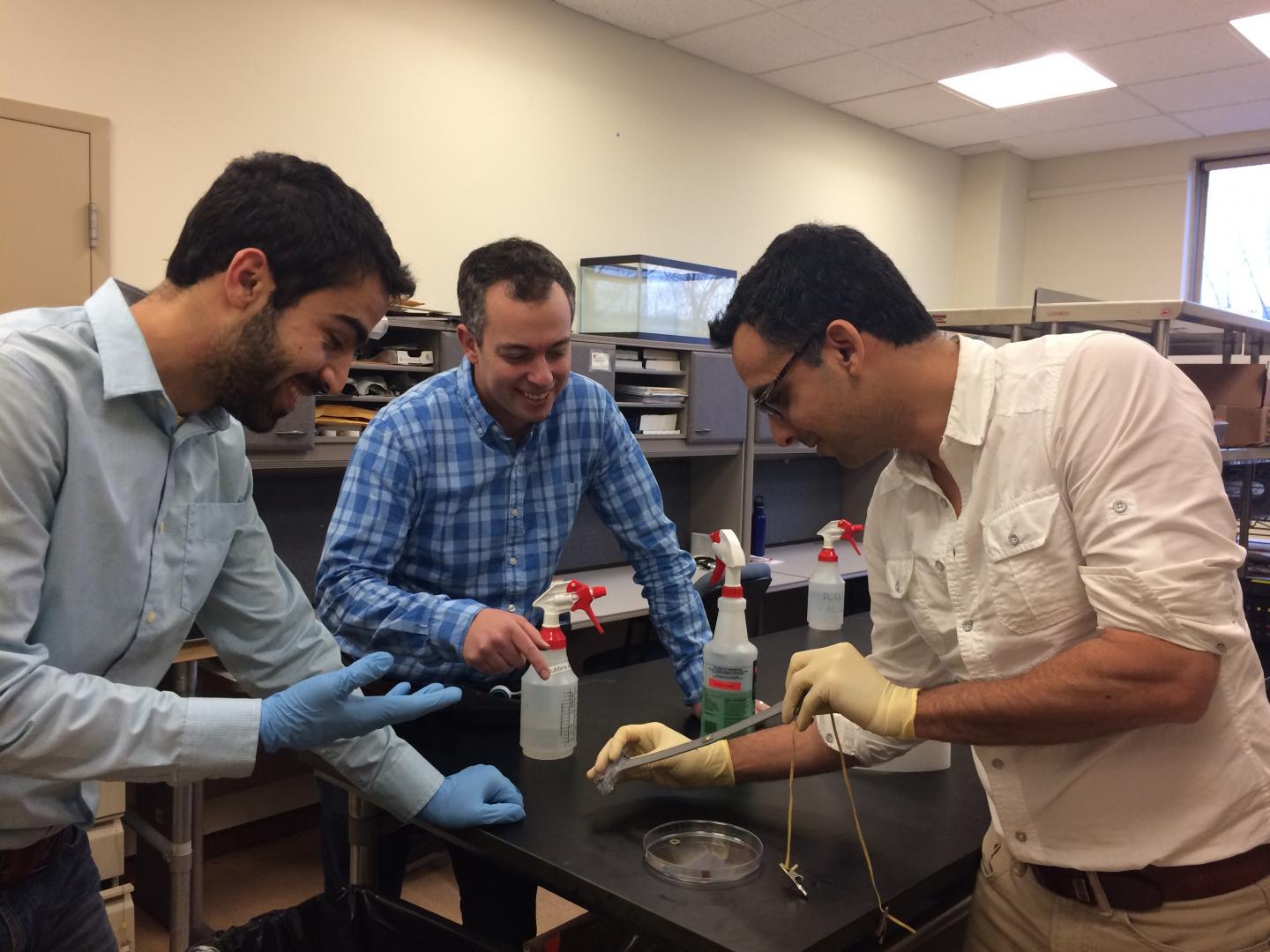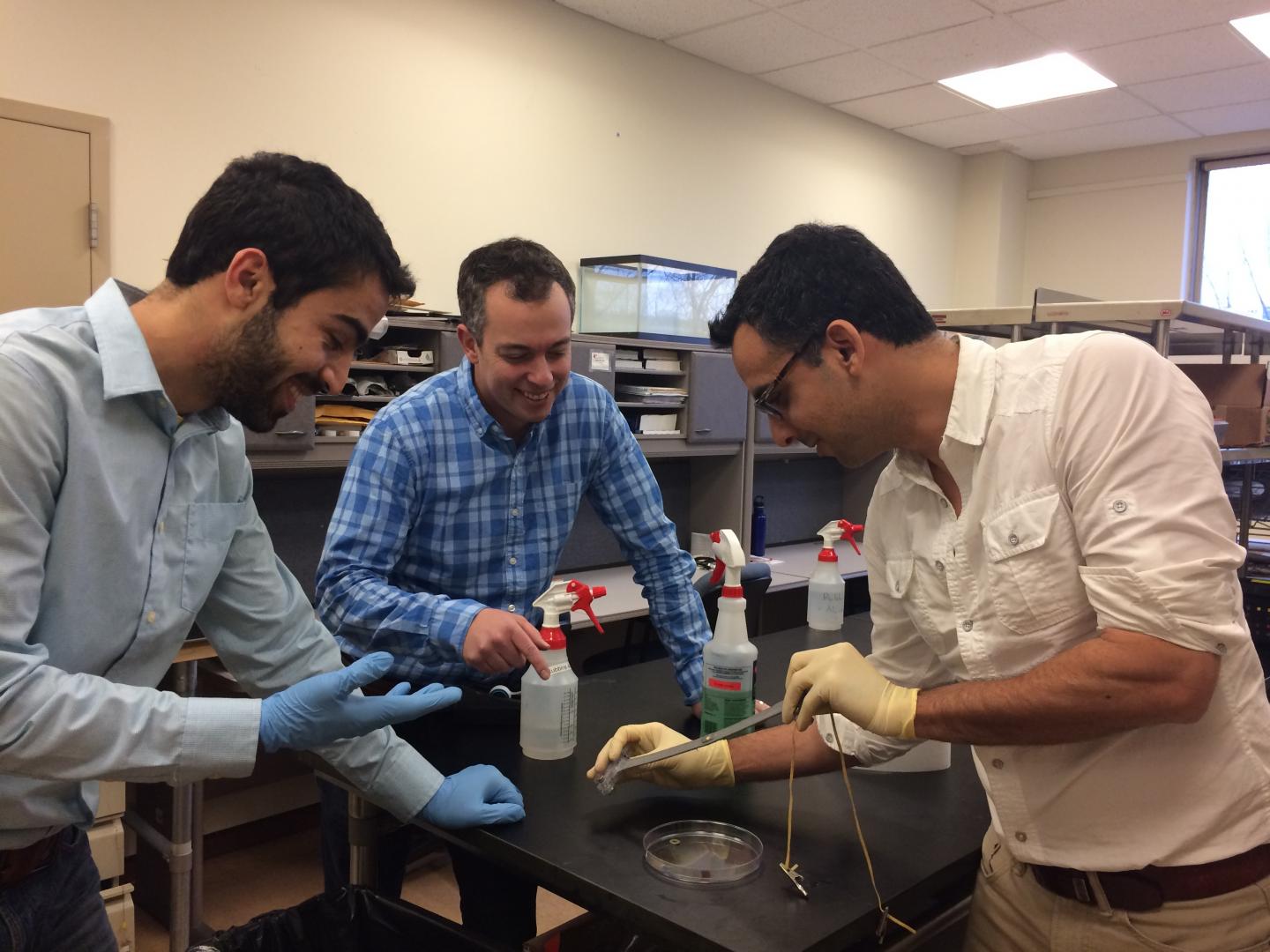
Credit: Lisa Kulick
PITTSBURGH — Carmel Majidi and Jonathan Malen of Carnegie Mellon University have developed a thermally conductive rubber material that represents a breakthrough for creating soft, stretchable machines and electronics. The findings were published in Proceedings of the National Academy of Sciences this week.
The new material, nicknamed "thubber," is an electrically insulating composite that exhibits an unprecedented combination of metal-like thermal conductivity and elasticity similar to soft, biological tissue that can stretch over six times its initial length.
"Our combination of high thermal conductivity and elasticity is especially critical for rapid heat dissipation in applications such as wearable computing and soft robotics, which require mechanical compliance and stretchable functionality," said Majidi, an associate professor of mechanical engineering.
Applications could extend to industries like athletic wear and sports medicine–think of lighted clothing for runners and heated garments for injury therapy. Advanced manufacturing, energy, and transportation are other areas where stretchable electronic material could have an impact.
"Until now, high power devices have had to be affixed to rigid, inflexible mounts that were the only technology able to dissipate heat efficiently," said Malen, an associate professor of mechanical engineering. "Now, we can create stretchable mounts for LED lights or computer processors that enable high performance without overheating in applications that demand flexibility, such as light-up fabrics and iPads that fold into your wallet."
The key ingredient in "thubber" is a suspension of non-toxic, liquid metal microdroplets. The liquid state allows the metal to deform with the surrounding rubber at room temperature. When the rubber is pre-stretched, the droplets form elongated pathways that are efficient for heat travel. Despite the amount of metal, the material is also electrically insulating.
To demonstrate these findings, the team mounted an LED light onto a strip of the material to create a safety lamp worn around a jogger's leg. The "thubber" dissipated the heat from the LED, which would have otherwise burned the jogger. The researchers also created a soft robotic fish that swims with a "thubber" tail, without using conventional motors or gears.
"As the field of flexible electronics grows, there will be a greater need for materials like ours," said Majidi. "We can also see it used for artificial muscles that power bio-inspired robots."
Majidi and Malen acknowledge the efforts of lead authors Michael Bartlett, Navid Kazem, and Matthew Powell-Palm in performing this multidisciplinary work. They also acknowledge funding from the Air Force, NASA, and the Army Research Office.
###
More information: "High thermal conductivity in soft elastomers with elongated liquid metal inclusions," Proceedings of the National Academy of Sciences.
About the College of Engineering: The College of Engineering at Carnegie Mellon University is a top-ranked engineering college that is known for our intentional focus on cross-disciplinary collaboration in research. The College is well-known for working on problems of both scientific and practical importance. Our "maker" culture is ingrained in all that we do, leading to novel approaches and transformative results. Our acclaimed faculty have a focus on innovation management and engineering to yield transformative results that will drive the intellectual and economic vitality of our community, nation and world.
About Carnegie Mellon University: Carnegie Mellon is a private, internationally ranked university with programs in areas ranging from science, technology and business to public policy, the humanities and the arts. More than 13,000 students in the university's seven schools and colleges benefit from a small faculty-to-student ratio and an education characterized by its focus on creating and implementing solutions for real world problems, interdisciplinary collaboration and innovation.
Media Contact
Lisa Kulick
[email protected]
412-268-5444
@CMUEngineering
http://engineering.cmu.edu
############
Story Source: Materials provided by Scienmag





